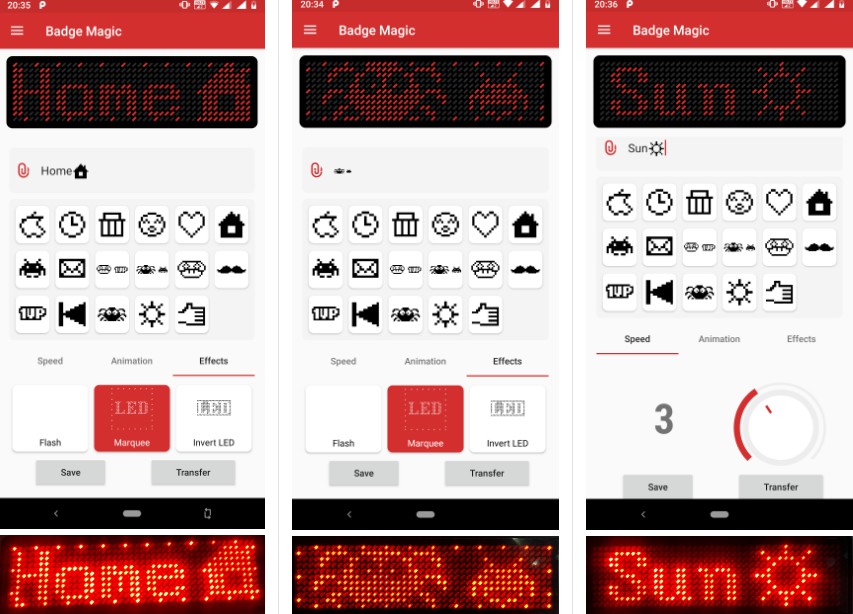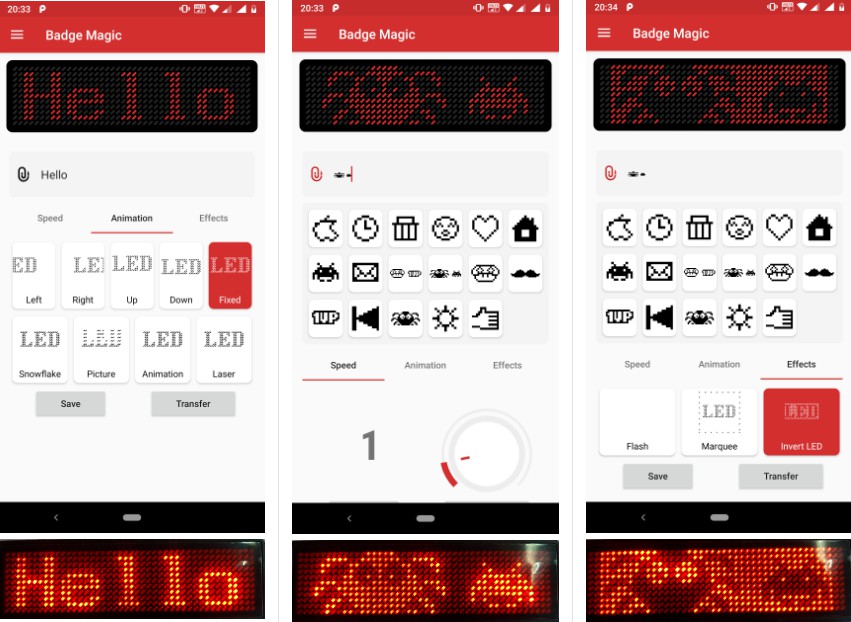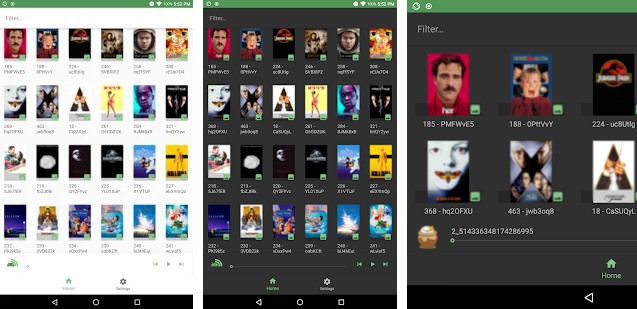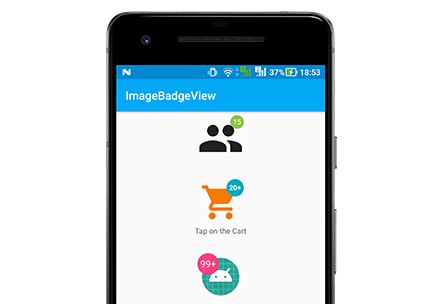Badge Magic
The Badge Magic Android app lets you create moving text and draw cliparts for to LED name badges. The app provides options to portray names, cliparts and simple animations on the badges. For the data transfer from the smartphone to the LED badge it uses Bluetooth. The project is based on the work of Nilhcem.
Download
- Latest Release Build in the apk branch
- Latest Development Build in the apk branch
Permissions
- Bluetooth: For sending data to the badge.
- GPS Location: This has been the standard set by Android for use with Bluetooth Low Energy (BLE) devices. For more information, please read the notes on Android website.
- Storage: For storing and saving badges.
Communication
Please talk to us on the badge-magic Gitter channel here.
Available Devices
There are a number of devices with Bluetooth on the market. As far as we can tell they are mostly from the same manufacturer. When you get a device ensure it comes with Bluetooth. There are devices that don't support Bluetooth. These are not supported in the app currently.
- Get one from the FOSSASIA Shop here
Screenshots

Reverse-Engineering Bluetooth LE Devices
Security in Bluetooth LE devices is optional, and many cheap products you can find on the market are not secured at all. This applies to our Bluetooth LED Badge. While this could lead to some privacy issues, this can also be a source of fun, especially when you want to use an LED Badge in a different way. It also makes it easy for us to get started with the development of a Free and Open Source Android app.
As we understand how the Bluetooth LED badge works, converting a text to multiple byte arrays, we can send using the Bluetooth LE APIs. An indepth blog post about reverse-engineering the Bluetooth community is here.
The implementation in the Android app consists of manipulating bits. That may be tricky. A single bit error and nothing will work, plus it will be hard to debug. For those reasons, and since the specs are perfectly clear the reverse engineer Gautier Mechling strongly recommends to start writing unit tests before the code implementation.
Branch Policy
We have the following branches
- development All development goes on in this branch. If you're making a contribution, you are supposed to make a pull request to development. PRs to development branch must pass a build check on Travis CI.
- master This contains shipped code. After significant features/bugfixes are accumulated on development, we make a version update and make a release.
- apk This branch contains many apk files, that are automatically generated on the merged pull request a) debug apk b) release apk
- There are multiple files in the apk branch of the project, this branch consists of all the APK files and other files that are relevant when an APK is generated.
- Once a pull request is merged, the previous APK branch is deleted and a new APK branch is created.
- If a PR is merged in development branch then the new APKs for the development branch are generated whereas the APKs corresponding to the master branch are not regenerated and simply the previously generated files are added.





